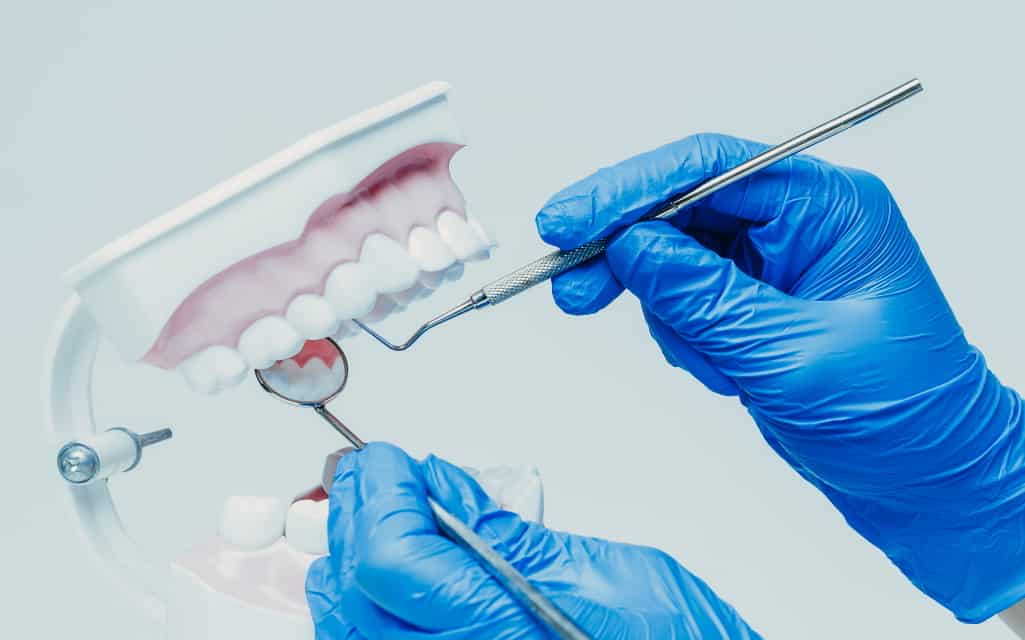You may have heard about Biomimetic Dentistry but may have a few questions about its advantages and if it’s worth traveling to find one. Biomimetic dentistry treats teeth that are fractured, weak, or decayed, and duplicates nature’s protective properties to seal them from bacteria.
The purpose of Biomimetic Dentistry is to reduce the need for conventional treatments, spend less money, and reduce the need for root canals and crowns. Their goal is to not require individuals to undergo invasive dental techniques but to offer dental care that benefits patients using simple and less painful techniques.
Advantages of Going Biomimetic
What are some of the advantages of biomimetic dentistry?
• Increasing the bond strength by an incredible 400%
• Using minimally invasive treatments to preserve tooth structure
• Less preparation for crowns
• Reduces the need for a root canal by 90-95%
• Reduction of catastrophic failures
• Less postoperative pain
• Less sensitivity
• Helps restore severely damaged teeth
Differences Between Traditional and Biomimetic Dentistry
The Academy of Biomimetic Dentistry outlines how the two types of dentistry differ. Biomimetics believes that the preservation of the tooth can be achieved with modern science.
Cavities
In traditional fillings and restoration, much of the tooth is drilled out and the fillings may crack or leak. Biomimetic dentistry focuses on not removing as much of the natural tooth. Advanced materials and techniques allow the dentist to create a strong bond that can last a lifetime.
Crowns
The traditional method of preparing a crown involves expensive and uncomfortable preparations that rely on cutting down and shaping the tooth. Biomimetic approaches use advanced adhesives and materials to build tooth resilience and strength. The specialized techniques allow the work to feel more like a natural tooth and reduces the instances of cracking and stress.
Root Canals
Root canals are needed when bacteria penetrate a filling. This causes infection and damage to the tooth. The traditional process for a root canal is painful and expensive. With biomimetic dentistry, the goal is to break the root canal cycle. They use materials that seal teeth which prevents infection.
How Can Biomimetic Dentistry Improve on Traditional Procedures?
DE Science & Technology reports that the science and technology of biomimetic dentistry can create greater longevity in dental health. Teeth restored by biomimetics are less likely to be extracted, need crowns, or endodontic therapy. The financial benefits are also of tremendous value to the patients. The treatments are less expensive and the restorations last longer and are repairable. Dentists have the opportunity to provide more efficient care at lower costs.
The tooth-conserving techniques in biomimetic dentistry often result in saving teeth that might have resulted in catastrophic tooth loss in traditional dentistry. By providing more efficient and longer-lasting restorations, patients now have lower-cost options for dental care.
Biomimetics looks toward fulfilling the Hippocratic Oath of doing no harm to patients. By restoring teeth to a more natural state and protecting them from bacteria, they are reversing the traditional dentistry trends of extracting, drilling, and highly invasive procedures.
Some of the state-of-the-art concepts they are looking to employ involve:
1. Repairing and eliminating cracks
2. Conserving dental pulp
3. Saving the maximum amount of tooth structure
4. Removing pathology
5. Strengthening the structure of teeth
6. Lengthening the time needed for re-treatment
The Secret to Biomimetic Dentistry
According to the biomimetic dentistry expert, Dr. Marc Lazare, this field of dentistry is all about the conservation of the tooth. “Bio-mimetic” actually means to mimic life. The treatments are modeled after nature’s properties using the latest in technology and dental materials.
The core belief in biomimetics is to use procedures that are the least invasive. When a tooth is compromised, it is reinforced with a polyethylene fiber mesh. Biomimetic dentists are rethinking dentistry by not starting with retention but understanding adhesion. If a tooth still tests vital, it doesn’t need to be removed. If a tooth has a crack, it doesn’t necessarily need a crown.
How do biomimetic dentists accomplish this? First and foremost, teeth are not filled, they are restored. If a tooth is structurally compromised, it is reinforced with the polyethylene fibered mesh which reinforces the structure of the tooth and disperses the forces imposed by chewing. The biocompatible materials minimize the stress between the tooth and the restoration process.
The material used in their processes are elastic and mimic the strength of dentin and enamel. Multiple layers are used to enhance the bond strength to the tooth. This process minimizes the stress that normally causes the restoration to break down. The best part? The material comes in natural shades to match tooth color and is virtually undetectable to the naked eye.
Why Go with Biomimetic Dentistry?
If you truly understand the principles of biomimetic dentistry, you will never want to go back to traditional. This more natural, less invasive, and less costly field dentistry will save your tooth structure, prevent sensitivity, stop the destruction of teeth, and protect the vital tooth pulp.
Besides saving money, you can avoid painful and costly root canals, be done with crowns and extractions, and use state-of-the-art bonding to restore your teeth to a more natural state. Biomimetic dentistry is based on peer-reviewed literature and is dedicated to enhancing the quality of life of all their patients.



